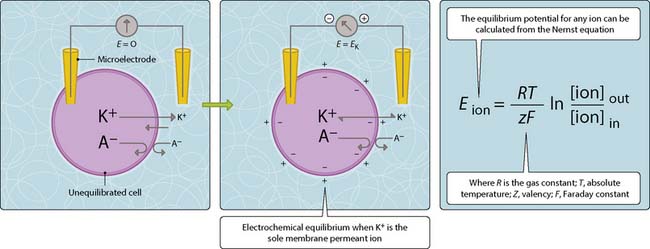17 The resting membrane potential
Membrane potential
All cells have an electrical potential difference across their plasma membrane (membrane potential). This is always expressed as the voltage inside relative to that outside the cell. Animal cells have resting membrane potentials ranging from approximately −20 to −90 mV depending on the cell type (Fig. 3.17.1). Changes in this potential difference form the basis of electrical signalling in cells.







